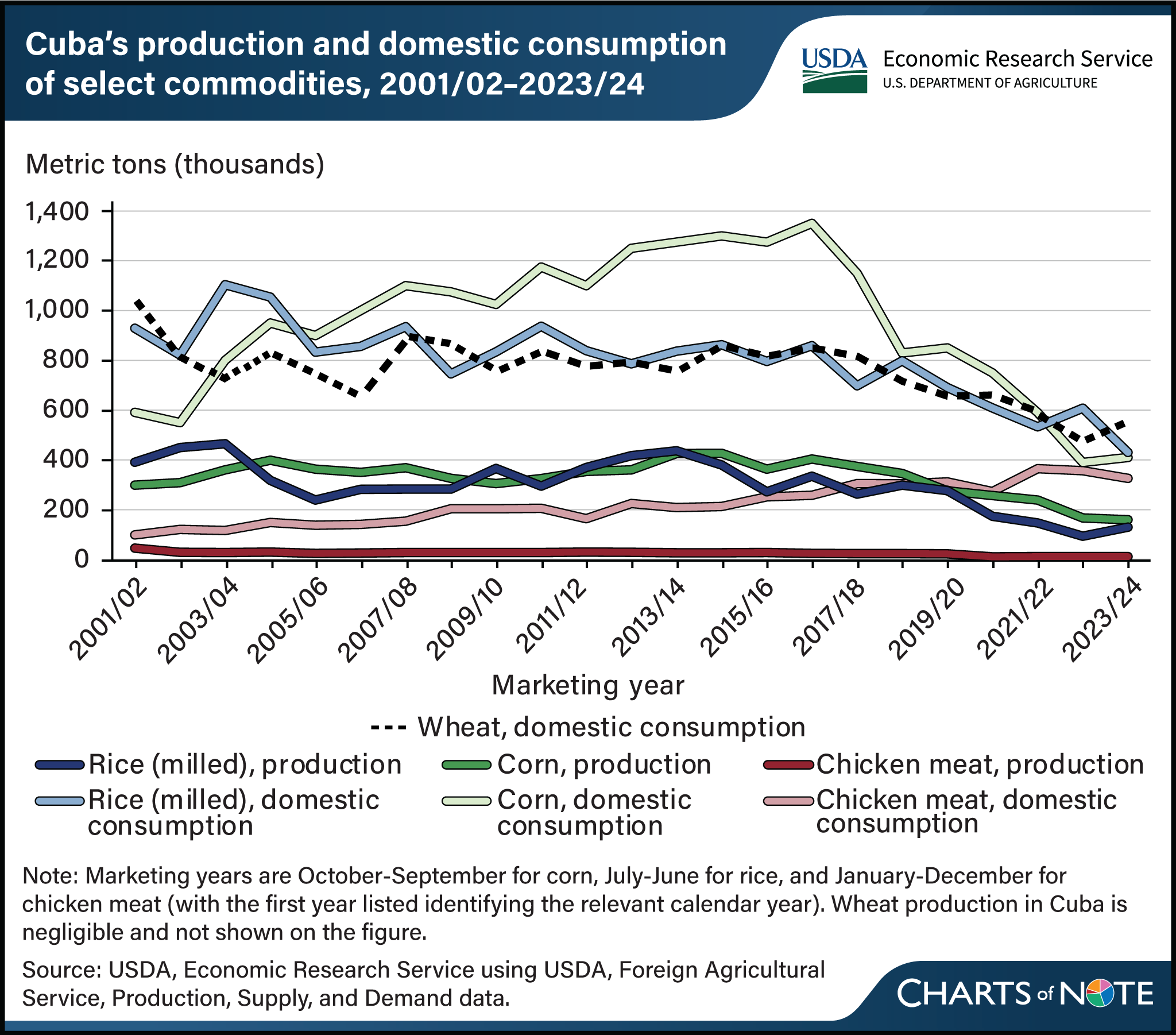Cuba’s declining agricultural production and consumption hit staple commodities
- by Steven Zahniser, Lila Cardell, Yacob Abrehe Zereyesus and Constanza Valdes
- 10/29/2024

Since 2019, the Cuban economy has struggled to export enough goods and services to finance imports. This has made it difficult for Cuba to afford the importation of not only agricultural commodities like rice, corn, and wheat, but also agricultural inputs that would help to bolster domestic crop production, such as fertilizers, herbicides, and farm machinery. Moreover, a succession of tropical storms and other adverse weather conditions have presented additional challenges to Cuba’s farmers. The impact of these conditions is apparent in Cuba’s declining staple crop production, which has contributed to lower consumption of these commodities. Production of both rice and corn in Cuba has trended downward since marketing year 2016/17 according to USDA estimates, while imports, largely from South America and East Asia, have tempered the accompanying reduction in consumption. Cuba relies almost entirely on imports for the wheat used to make flour and bread, and these imports—along with consumption—have declined over the past decade, as reflected in decreased rations of bread from the Cuban Government. In contrast to declining staple crop consumption, chicken consumption in Cuba has trended modestly higher, largely because of increased poultry imports, in part from the United States. In 2023, chicken meat accounted for about 82 percent of U.S. agricultural exports to Cuba. This chart also appears in the USDA, Economic Research Service report, Cuba’s Deteriorating Food Security and Its Implications for U.S. Agricultural Exports.

